When I needed to do presentations of Scrum to executives and students, I started to look for existing ones. Most presentations I found were very good for detailed presentations or training. But what I was looking for was a presentation I could give in less than 15 minutes (or more if I wanted). Most of them also contained out dated content. For example, the latest changes in the Scrum framework were not present and what has been removed was still there.
I decided to start over and created a new presentation with the following objectives:
- Based on the official Scrum Guide: the structure is very similar and I attempted to extract only the essentials.
- Not more than 10 slides (without the front and back cover).
- The least text possible to extend the possibility for the presenter to say what is important to his organization without missing the core principles of Scrum.
- Having good visuals to make it attractive.
- A final invitation to read the official Scrum Guide for those who wanted more detailed information.
The result is a ten slide presentation that you can download then use as a powerpoint by clicking on the button below. Images are also available so you can use another presentation tool. It is licensed under a Creative Commons Attribution-NoDerivs 3.0 Unported License (commercial usage & sharing allowed & encouraged). Feedback & suggestions welcome in the comments of this post.
UPDATE 14th of January 2018: I updated the slides to integrate latest Scrum Guide modifications.

Here are the slides preview:
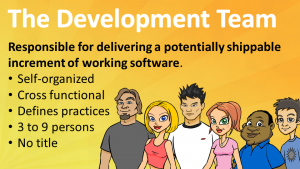
Scrum Development Team
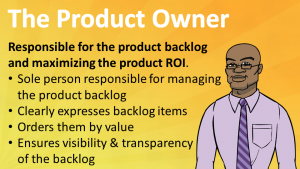
Scrum Product Owner
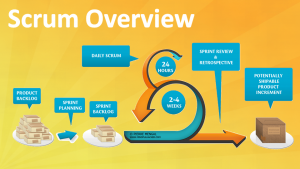
Scrum Process Overview
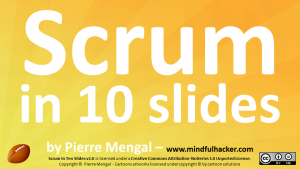
Scrum In Ten Slides Intro

Scrum In Ten Slides Credits
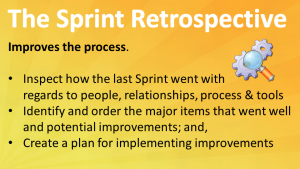
Scrum Sprint Retrospectives
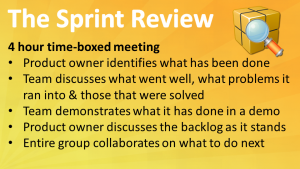
Scrum Sprint Review
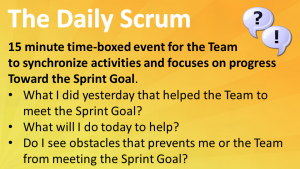
Daily Scrum
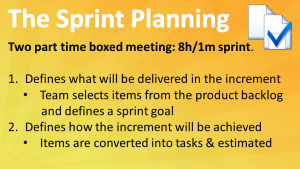
Scrum Sprint Planning
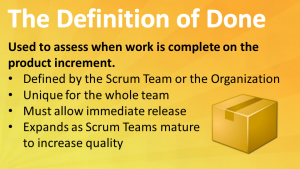
Scrum Definition Of Done
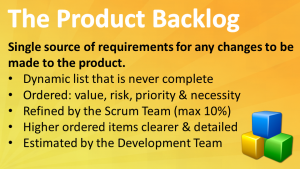
Scrum Product Backlog
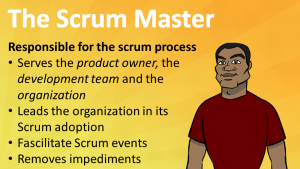
Scrum Master
Here a “light” Agile Software Development checklist that I have used for many years to introduce Agile in organization. I usually introduce few items per week.
Product Management
- A product Backlog, estimated and prioritized by a “Product Owner” is used
- A “Release Plan” exists and is known by the team
- A “Company Strategy” exists and is known by the team
- Features are divided into “User Stories”
- The “User Stories” are estimated by the whole team using “Planning Poker”
Workflow
- The development work is divided into iterations or timeboxed “Sprints” or “Iterations”
- A “kanban” or “Information Radiator” is used
- The tasks are not assigned, the team organizes itself
- The “Velocity” of the team is known
- No outsider can interfere directly with the team during an iteration
- “Daily Meetings” take place and do not last more than 10 minutes
- A “Sprint Review” is organized and the output recorded
- A demonstration is held at the end of each iteration
- The problems are tracked and by the “Scrum Master” and/or management
- A proper Retrospective is held
- A “Burndown” graph is updated daily
- The “Code Reviews” are systematically organized
Development Tools & Rules
- A source controller is in place
- A continuous integration build server is used and testing (unit & guidelines) takes place at each commit
- The packaging of the product is fully automated
- A (simple) bug management tool is used
- Each bug is reproduced in a single test and then corrected
- 80% of the code is covered by automated testing
- A “Solution Log” in WIKI form is used
- The “Coding Guidelines” are defined and understood by all
- A maximum of 40 work hours per week!
Please note that any numbers above can be adjusted to your reality.















Recent Comments